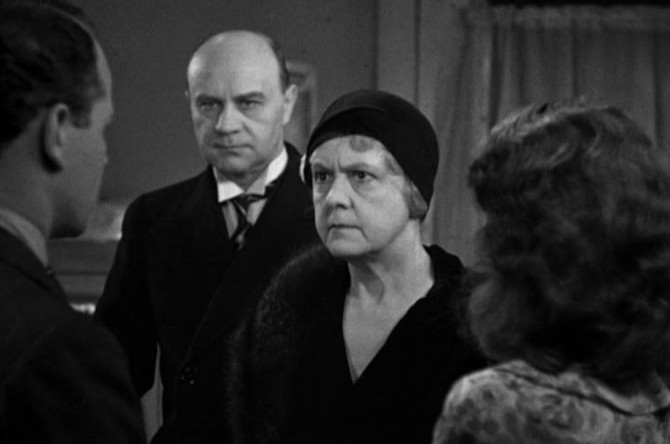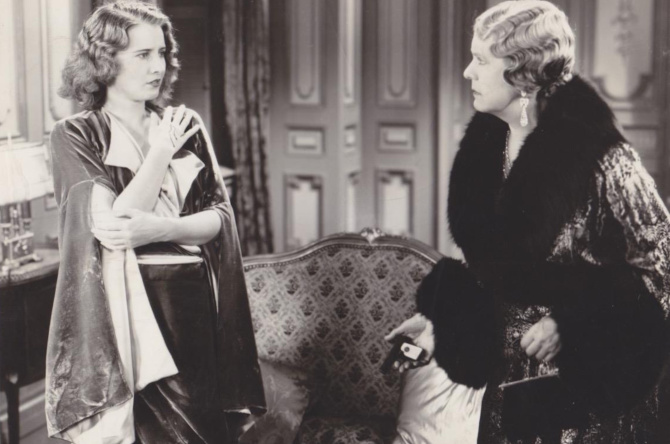‘What Could Have Been’ is a continuing look into the reels of film history, analysing movies that could have been something special, but due to problems with script, production, budget, or any other type of issue, did not reach its full potential.
It’s usually hard to bet against Barbara Stanwyck. Starting her career in the late 1920s, within a few years she was already churning out star making roles as plucky working class girls who could rise to the top: think Ten Cents a Dance (1931) and Baby Face (1933) – both reviewed here on Filmizon, only to further elevate herself during the film noir era with starring roles like Double Indemnity (1944) and The Strange Love of Martha Ivers (1946) – also both on Filmizon, she even conquered television later in her career as matriarch Victoria Barkley in 112 episodes of Big Valley from the mid to late 1960s.
In other words, it’s rather unusual to see her in a clunker. . . though with the film looked at here today, Shopworn (1932), directed by Nick Grinde, Stanwyck herself described it as, “one of those terrible pictures they sandwiched in when you started”.
In all reality, it’s not that simple. Made before the infamous Hays Code came into full power in 1934 (officially called the Motion Picture Production Code), it had already been set in place by 1930 – with only a small staff and little strength until `34. A perfect example of a film from this Pre-Code era that floundered by going along with the new rules and regulations, they chopped up their script and film in order to appease the group – the finished product becoming a lifeless venture with just enough tease to become a ‘what could have been’.
Following a down on her luck young woman, Kitty Lane (Stanwyck), after her father dies during an explosive mining accident, is sent to live with her Aunt Dot (Zasu Pitts). . . basically forced by her taskmaster ‘Uncle’ Fred (Lucien Littlefield) to work as a full-time waitress for his restaurant.
While there, one of the patrons, wealthy David Livingston (Regis Toomey), falls for her. . . and for once, she acquiesces to a date. Soon falling in love, it does not take long for his overbearing mother (Clara Blandick – Auntie Em in The Wizard of Oz), to set her corrupt friend and fixer, Judge Forbes (Oscar Apfel), on her, having her swept away and arrested on charges of prostitution while dear old mum sweeps her son off to Europe – claiming she is severely ill and needs to see a specialist.
Many years later, Kitty has now become one of the premiere lounge singers in the world, while David has gained fame for being a top surgeon – though he seems to have lost much of his boyish charm after being selfishly pushed day in and day out by his mother. Still missing his first love, will David ever be able to win over the now ultra successful but equally as bitter Kitty? Might mommy dearest attempt to run interference once again if the two try to come together? Could this simply be a Shakespearian tale of two star crossed lovers who will never find happiness?
Though the roots are here for an intriguing and quite edgy melodrama, with elements of rich versus poor, familial strife, perseverance, as well as love and hate aplenty (which makes sense, as Columbia Studios was famous for their class themed romances – a good number of them directed by Frank Capra), clearly director Grinde and the Studio got cold feet, as nearly everything great about edgy Pre-Code movies has been eliminated here. . . making for a disjointed and somewhat flat effort. Stanwyck’s so called resurrection upon serving her sentence was supposed to include elements of prostitution before she found great success as a lounge singer (though outside of minor suggestive elements, this entire aspect of the film has been removed), instead, she simply becomes a star – giving her character no time for development. Many pieces of dialogue were also eliminated (all that’s left is a single scene with a ‘suggestive’ word as Kitty attempts to increase her vocabulary by learning words that start with the letter e), while the concluding scene comes completely out of the blue. . . everything wrapped up nicely after the wild twist that makes little sense.
A rare case of a Studio almost completely backing down to Hays Code pressure in the early 1930s, Shopworn is an early example of the censorship that would hit Hollywood hard in 1934 and after, providing a sampling of what would have come if cleverness, subtlety, and creativity didn’t find a way to subvert the very restraining Production Code. Despite all of these flaws, the performances shine through, with Stanwyck giving her dynamic best despite her character’s one dimensional nature, Blandick being the utter opposite of her future performance as Auntie Em, and character actor Pitts, always amazing at playing a slightly depressed and fretful woman, is up to her same standards here. So, shop for this case of what could have been and you’ll see how the Hays Code has worn it out.



